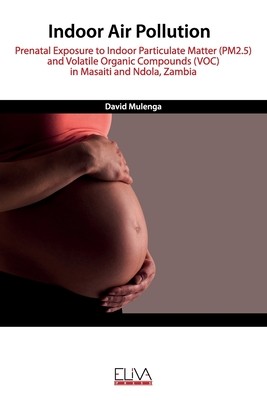
- We will send in 10–14 business days.
- Author: David Mulenga
- Publisher: Eliva Press
- ISBN-10: 1952751926
- ISBN-13: 9781952751929
- Format: 15.2 x 22.9 x 0.6 cm, softcover
- Language: English
- SAVE -10% with code: EXTRA
Reviews
Description
There is a paucity of scientific literature on indoor air pollution (IAP) concentration levels and its adverse health effects in sub-Saharan African. Although prenatal exposure to indoor air pollutants has in many cases been significantly associated with a number of adverse maternal and child health outcomes, little attention on monitoring air pollutants in Sub-Saharan households. This book explores the magnitude of particulate matter (PM2.5 in μg/m3) and volatile organic compounds (voc in ppb) in Masaiti rural and Ndola urban districts of Zambia. It presents major environmental determinants of indoor air pollutants in rural and urban households in Zambia. The author uses the indoor air monitoring data to evaluate the association between prenatal exposure to indoor air pollution on mother's respiratory health and the occurrence of low birth weight, preterm birth and small for gestational age. Findings indicate that exposures experienced by pregnant women, who spend a large proportion of their time indoors and are involved in routine domestic use of biomass fuels for cooking even during pregnancy, have been measured to be many times higher than World Health Organization (WHO) guidelines. Therefore, in order to improve maternal and child health indices in sub-Saharan Africa and further reduce the disease burden due to indoor air pollution in general, the author recommends the following:
- Increase availability of data on concentrations of indoor air pollution to aid in planning and development of national standards in sub-Saharan Africa.
- Reinforce regulatory policies on clean energy use at household level and emissions in general.
- Scale up research in and use of emerging low-cost sensors for assessing indoor air pollution periodically.
- Raise levels of awareness among populations, especially women and children on adverse health effects of biomass use in sub-Saharan Africa.
EXTRA 10 % discount with code: EXTRA
The promotion ends in 19d.18:03:49
The discount code is valid when purchasing from 10 €. Discounts do not stack.
- Author: David Mulenga
- Publisher: Eliva Press
- ISBN-10: 1952751926
- ISBN-13: 9781952751929
- Format: 15.2 x 22.9 x 0.6 cm, softcover
- Language: English English
There is a paucity of scientific literature on indoor air pollution (IAP) concentration levels and its adverse health effects in sub-Saharan African. Although prenatal exposure to indoor air pollutants has in many cases been significantly associated with a number of adverse maternal and child health outcomes, little attention on monitoring air pollutants in Sub-Saharan households. This book explores the magnitude of particulate matter (PM2.5 in μg/m3) and volatile organic compounds (voc in ppb) in Masaiti rural and Ndola urban districts of Zambia. It presents major environmental determinants of indoor air pollutants in rural and urban households in Zambia. The author uses the indoor air monitoring data to evaluate the association between prenatal exposure to indoor air pollution on mother's respiratory health and the occurrence of low birth weight, preterm birth and small for gestational age. Findings indicate that exposures experienced by pregnant women, who spend a large proportion of their time indoors and are involved in routine domestic use of biomass fuels for cooking even during pregnancy, have been measured to be many times higher than World Health Organization (WHO) guidelines. Therefore, in order to improve maternal and child health indices in sub-Saharan Africa and further reduce the disease burden due to indoor air pollution in general, the author recommends the following:
- Increase availability of data on concentrations of indoor air pollution to aid in planning and development of national standards in sub-Saharan Africa.
- Reinforce regulatory policies on clean energy use at household level and emissions in general.
- Scale up research in and use of emerging low-cost sensors for assessing indoor air pollution periodically.
- Raise levels of awareness among populations, especially women and children on adverse health effects of biomass use in sub-Saharan Africa.


Reviews